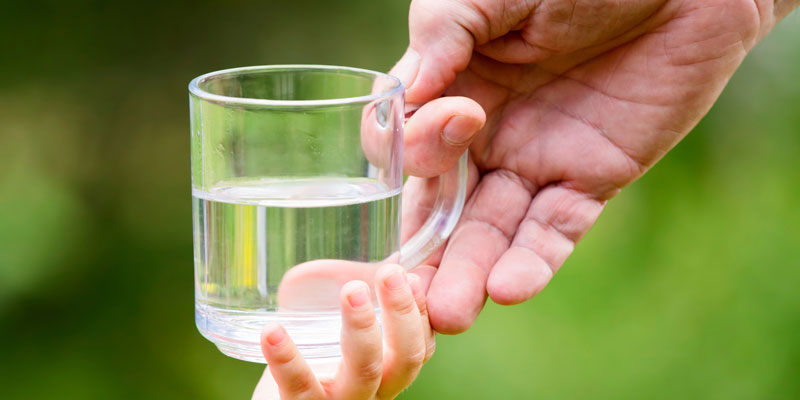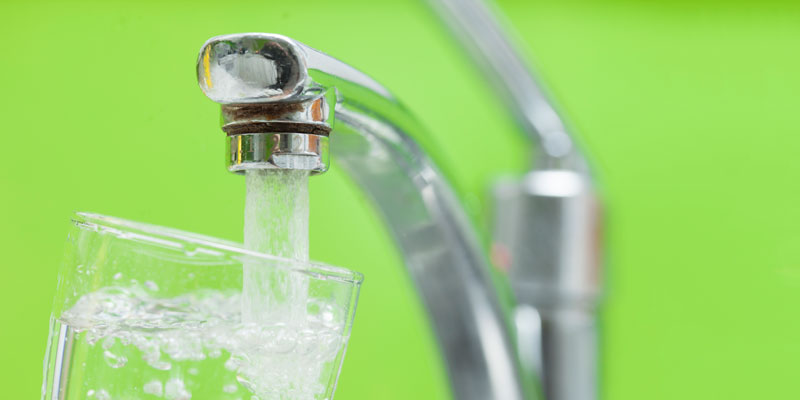Examining Potential Short and Long Term Impacts of Partial Lead Service Line Replacements on Lead Release in Drinking Water Distribution Systems
Principal Investigator - Dr. Michèle Prévost, Professor and NSERC Industrial Chair in Drinking Water, Polytechnique Montréal (2012 - 2015)

Challenge
Many lead service lines are still present in Canada, and are currently being replaced by municipalities. Canadian municipalities are spending hundreds of millions of dollars to replace lead services lines (LSLs) in their distribution systems with the objective of eliminating lead materials and meeting new more stringent drinking water regulations. However, the replacement is often only partial, because of the shared ownership of the service line. Therefore, a copper pipe (municipality side) is connected to a lead pipe (property side), which might actually increase corrosion and lead concentrations at the tap, thus creating short and long term acute exposure risks.
The project team, led by Dr. Michèle Prévost, had several project objectives: 1) verify whether the results of bench and pilot investigations showing extreme and sustained lead release after partial LSLs are indicative of full scale situations in Canadian distribution systems; 2) assess the effectiveness of current sampling protocols to detect high levels of exposure following partial LSL replacements; 3) assess the effectiveness of proposed mitigation strategies to partial LSLs replacement procedures; and 4) Quantify exposure risks to lead resulting from partial replacements.
Project
The project investigated short and long term impacts of partial LSL replacements on lead leaching into tap water at bench, pilot and field scales over a period of three years. Experiments and monitoring were conducted in households and water utilities in four municipal distribution systems in Halifax, Montréal, Ottawa, and London. The impact of disinfectant residual (chlorine and chloramines) and corrosion control (silicates and phosphates) strategies on galvanic corrosion were investigated. Monthly sampling was initiated before and after LSL replacement in order to characterize and quantify lead release and particulate production. The effectiveness of mitigation strategies for controlling lead release (partial LSL replacement with plastic piping and insertion of dielectrics, which are electrical insulators, in piping) was also tested.
A sampling protocol to monitor lead release associated with partial LSL replacement monitoring was developed and provided to utilities and regulatory agencies. Most importantly, field results provided full scale documentation of the actual occurrence of particulate lead release before and after partial LSL replacement that can be compared to pilot scale data. Using field and pilot data, a zonal model was developed to evaluate the annual exposure to lead from tap water from existing and partial LSL replacement sites. An evaluation of the effectiveness of public intervention was conducted through a survey of residents from households in which partial replacements have been made. Results have aided utilities and public health agencies in formulating public discussions and outreach programs.
Outputs
- A model was developed to simulate short-term variations of lead levels in tap water and presented to the Public Health departments of the Cities of Montréal and Ottawa. Baseline exposure parameters applied in the model were compared to those used by Montréal Public Health authorities for their simulations.
- In order to disseminate information to end-users, researchers participated in several meetings:
- August 2012, meeting with the City of Montréal. Confirmation of the full-scale protocol.
- February 2013, meeting with the City of Montréal. Presentation of the full-scale project documents for approval by the City and by Polytechnique Ethical Committee.
- March 2013, meeting with the City of Montréal.
- April 2013, meeting at Ottawa water treatment plant. Design and experimental plan for their pilot.
- May 2013, meeting with the City of Montréal and Public Health. Action plan for lead and partial LSLR.
- This research resulted in scholarly journal publications:
- Cartier, C., Doré, E., Laroche, L., Nour, S., Edwards, M., Prévost, M. 2013. Impact of treatment on Pb release from full and partially replaced harvested lead service lines (LSLs). Water Research 47(2).
- Cartier, C., Bannier, A., Pirog, M., Nour, S., Prévost, M. 2012. A rapid method for lead service line detection. Journal AWWA 104(11), E596-E607.
- Deshommes, E., Laroche, L., Nour, S., Cartier, C., Prévost, M., 2010a. Source and occurrence of particulate lead in tap water. Water Research 44, 3734-3744.
- Deshommes, E., Nour, S., Richer, B., Cartier, C., Prévost, M., 2012a. POU devices in large buildings: Lead removal and water quality. Journal of the American Water Works Association 104, E282-E297.
- Deshommes, E., Prévost, M., 2012. Pb particles from tap water: bioaccessibility and contribution to child exposure Environmental Science and Technology 46, 6269–6277.
- Deshommes, E., Prévost, M., Levallois, P., Lemieux, F., Nour, S., 2013. Application of lead monitoring results to predict 0-7 year old children’s exposure at the tap Water Research 7, 2409–2420.
- Deshommes, E., Tardif, R., Edwards, M., Sauve, S., Prévost, M., 2012b. Experimental determination of the oral bioavailability and bioaccessibility of lead particles. Chemistry Central Journal 6, 138.
- Deshommes, E., Zhang, Y., Gendron, K., Sauvé, S., Edwards, M., Nour, S., Prévost, M., 2010b. Lead removal from tap water using POU devices. Journal of the American Water Works Association 102, 91-105.
- Levallois, P., St-Laurent, J., Gauvin, D., Courteau, M., Prévost, M., Campagna, C., Lemieux, F., Nour, S., D’Amour, M., Rasmussen, P.E., 2013. The impact of drinking water, indoor dust and paint on blood lead levels of children aged 1-5 years in Montreal (Québec, Canada). Journal of Exposure Science and Environmental Epidemiology.
Outcomes
- The results of the proposed research helped Canadian municipalities and regulatory agencies to establish guidelines, regulations and investment priorities based on sound scientific data from controlled experiments at bench and pilot scales and fully validated in full scale distribution systems.
- The results provided Health Canada and the Provincial Ministries of Environment and Health with reliable data to understand the impact of partial LSLs on tap water lead concentrations, as well as practical field validated data to establish efficient and applicable guidelines and standards, and consequently monitor and reduce the exposure of Canadian population to lead on more scientific basis.
- The sampling protocol developed by this project provided Canadian municipalities, including First Nations and non-transient water systems (schools, daycares, hospitals) with sampling guidelines adapted to monitor partial LSLs, improve practice of replacement with alternative materials, and demonstrate corrective action through corrosion control.
- The project findings are of interest to consulting firms and manufacturers of plumbing equipment and piping as data generated by this project will provide scientific data that will impact product definition and the selection and implementation of corrective actions.




